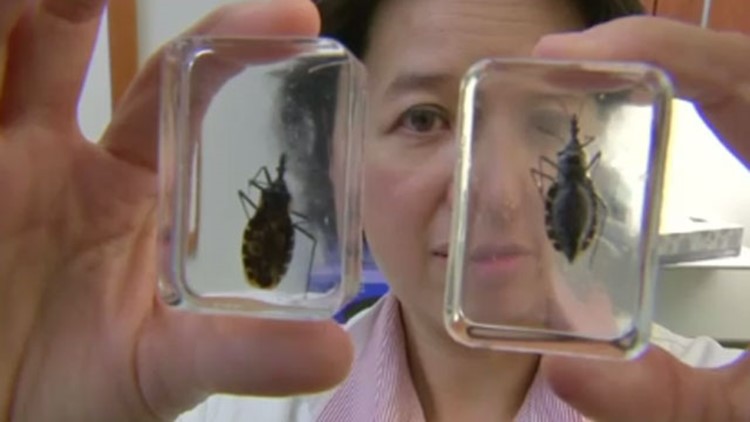The kissing bug is making a comeback in Texas and has recently been spotted in Georgia, too - and Indiana is also among the states where it's been spotted. The name sounds cute, but a bite from this bug can be deadly.
"They look a little darker than a cockroach, heart shell," said Dr. Laila Woc-Colburn, Baylor College of Medicine.
Dr. Woc-Colburn knows these silent killers well.
"It stays dormant for about you know, 15, 20, 30 years and then you start having congestive heart failure or maybe kind of weird rhythms in your heart," she said.
It starts with a single bite from a kissing bug - also known as Triatomine bugs.
The kissing bug likes to hide in tree bark. It comes out to feed at night. It can bite you anywhere, but often targets the neck and face when people are asleep. That's where the nickname comes from.
The bug carries a parasite which causes the infectious disease, Chagas.
"When you have a bite, you usually scratch and when you scratch you get the stuff that the bug defecated into your arm and those have the little parasite that looks like an "S". The Tripminisoma gets into you," said Dr. Woc-Colburn.
Most people experience flu-like symptoms for a few days after they are bitten and then may feel nothing unusual for years to come. About 70 percent of people can survive it with treatment, for the rest the disease is fatal.
Learn more here about kissing bugs and how to prevent infection
"In Latin America, it can affect more than 30 million people. Usually low income where they don't have access to care," said Dr. Woc-Colburn.
There are seven confirmed cases in Harris County, Texas so far. A health department spokesperson says they're working on an educational campaign now to raise awareness.
There are treatments for Chagas, but so far no vaccine available.
Info from CDC:
Where are triatomine bugs typically found?
Triatomine bugs (also called reduviid bugs, "kissing" bugs, assassin bugs, cone-nosed bugs, and blood suckers) can live indoors, in cracks and holes of substandard housing, or in a variety of outdoor settings including:
Beneath porches
Between rocky structures
Under cement
In rock, wood, brush piles, or beneath bark
In rodent nests or animal burrows
In outdoor dog houses or kennels
In chicken coops or houses
They are typically found in the southern United States, Mexico, Central America, and South America (as far south as southern Argentina). The map below details triatomine occurrence by U.S. state.
Prevention:
Synthetic pyrethroid sprays have been used successfully in Latin America to eliminate house infestations. Although similar chemicals are available in the United States, none have been specifically approved for use against triatomine bugs. A licensed pest control operator should be consulted if considering the use of insecticides. Please note that roach hotels or other "bait" formulations do not work against triatomine bugs. Long lasting insecticide treated bednets and curtains have been shown to kill these bugs.



